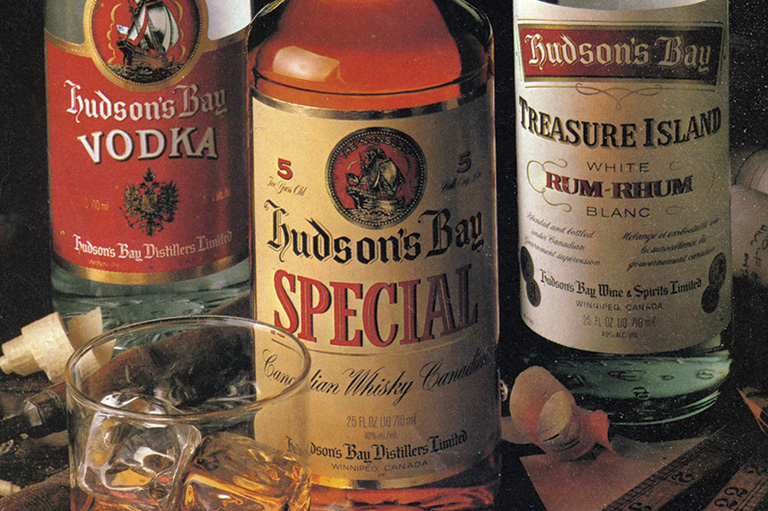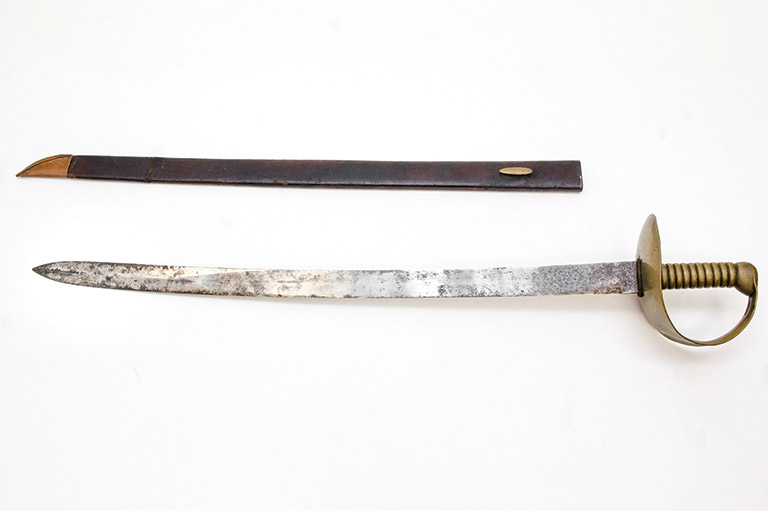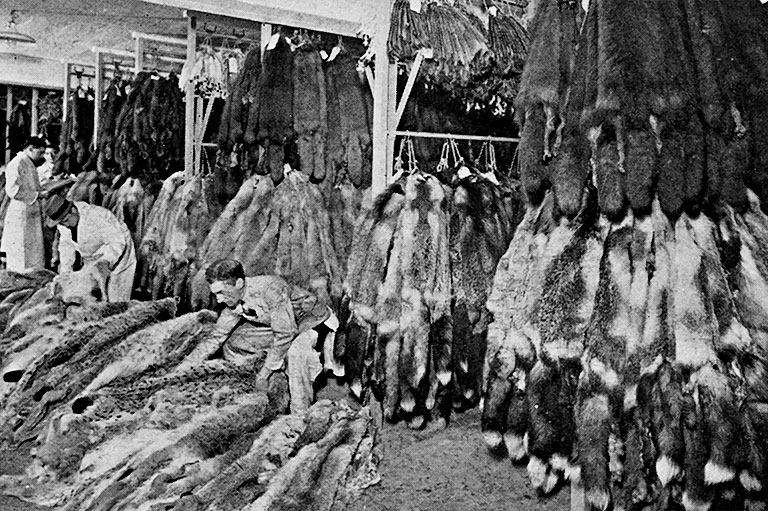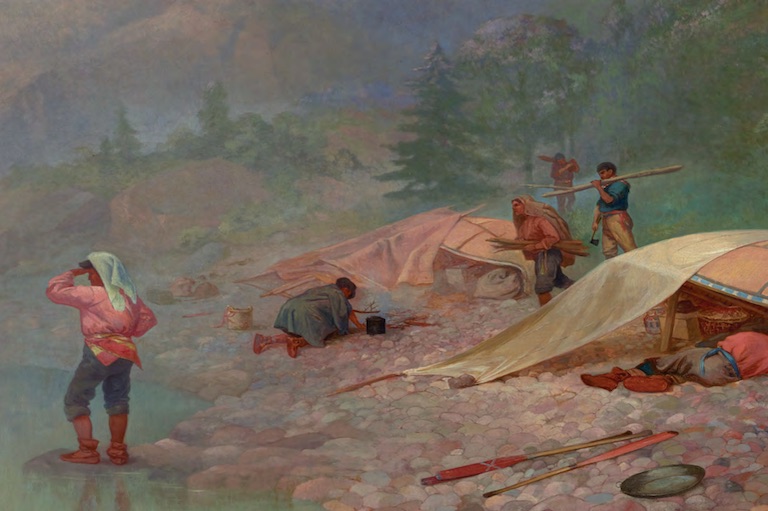Trade Axes
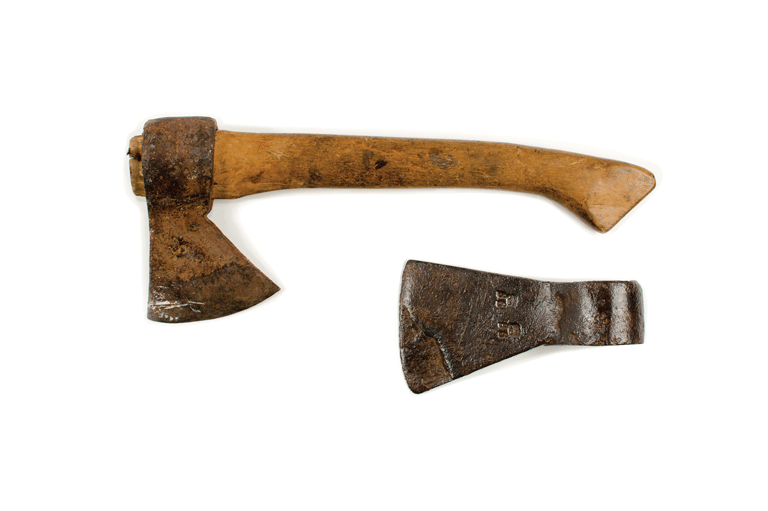
Trade axes were an important and highly prized trade good throughout the fur trade era. The axe head pictured below dates to the early nineteenth century and includes the maker’s mark of Robert Sorbey of England on the bit (the blade), while the eye (the hole for the handle) is fairly round. The complete early twentieth-century axe on the right shows a true Hudson Bay pattern, a style made by many companies and which is characterized by the relatively flat top edge and a teardrop-shaped eye.
The shape of the eye is important, as the earliest trade axes had round eyes that were problematic for keeping the axe head secured to the handle. The shift to a teardrop-shaped eye — along with the creation of a thicker, square poll (the butt end of the axe head) — was likely made in response to the Indigenous and settler customers who used them on a daily basis.
If you ever come across an axe head with HBC stamped on the bit, be suspicious! The HBC never marked its axes. But the blacksmiths who made them — including Robert Sorbey — often did.
Themes associated with this article
Advertisement
With 7 uniquely curated newsletters to choose from, we have something for everyone.

